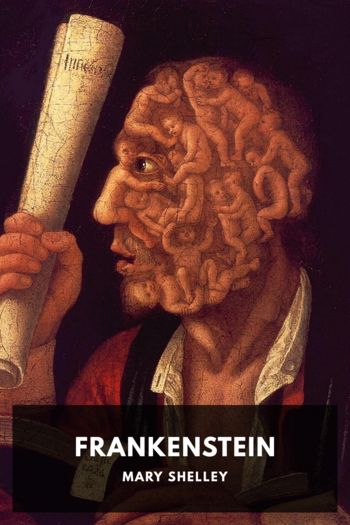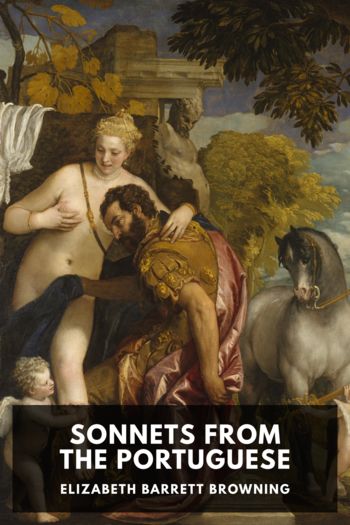Two-Way Mirror, Fiona Sampson [children's ebooks online .txt] 📗

- Author: Fiona Sampson
Book online «Two-Way Mirror, Fiona Sampson [children's ebooks online .txt] 📗». Author Fiona Sampson
The ‘Book’ is, she realises, a crack at canon forming, and in an influential publication too. So she takes it seriously. The ideal anthology she pictures excludes more drama, but includes more religious poetry, than its predecessors. She manages to slip in a vignette of ‘Robert’ (today usually held to be ‘William’) Langland, mediaeval author of Piers Plowman, as a Malvern poet, which allows her to claim her own home ground at Hope End as the birthplace of English poetry:
It is well for thinkers of England to remember reverently, while, taking thought of her poetry, they stand among the gorse,—that if we may boast now of more honoured localities, of Shakespeare’s ‘rocky Avon,’ and Spenser’s ‘soft-streaming Thames,’ and Wordsworth’s ‘Rydal Mere,’ still our first holy poet-ground is there.
After this glimpse of personal foundation myth, Elizabeth goes on to outline a pantheon built from a tripod of Geoffrey Chaucer (Dilke’s parameter), William Shakespeare (of course), and the currently unfashionable William Wordsworth. She mounts a spirited, ad hominem defence of the seventy-two-year-old, not yet Poet Laureate, whose masterpiece The Prelude will remain unknown until it is posthumously published eight years from now. Along the way she names Alfred Tennyson and Robert Browning as coming men, arguing that too many poets:
do not live by their truth, but hold back their full strength from Art because they do not reverence it fully; and all booksellers cry aloud […] that poetry will not sell; and certain critics utter melancholy frenzies, that poetry is worn out for ever […] In the meantime […] the Tennysons and the Brownings, and other high-gifted spirits, will work, wait on.
By contrast, her vision of the ‘heroic life of poetic duty’, which she elides with the figure of Wordworth, has an almost Revivalist fervour:
the long life’s work for its sake—the work of observation, of meditation, of reaching past models into nature, of reaching past nature unto God; and the early life’s loss for its sake—the loss of the popular cheer, of the critical assent, and of the ‘money in the purse’.
Critical intelligence, however idealistic, needs to keep engaging. Elizabeth’s next piece for The Athenaeum, at the end of August, is a review of Wordsworth’s Poems, Chiefly of Early and Late Years. The book’s publisher is Edward Moxon, a driven, ambitious editor who’s also recently published Mary Shelley’s first posthumous Poems of Percy Bysshe Shelley (the swiftly withdrawn 1839 edition), Alfred Tennyson’s reputation-making Poems of 1842, and Robert Browning’s Sordello (1840), as well as a series of leading dramatists. He is, in short, the publisher of choice, and by the end of the year Elizabeth is proposing a volume of her own poems to him. Or rather, she sends her brother George to intercede on her behalf.
The meeting doesn’t go well. ‘No—Moxon wont have my poems’, Elizabeth tells Miss Mitford. This is a rude awakening. She’d been planning to collect her ‘fugitive poetry to make a volume’ that might ensure a positive reception for the long poem she wants to work on next. But the business-like editor:
‘did protest’ like a bookseller, his ‘respect for Miss Barrett’s genius,’—the only drawback being that he preferred having nothing to do with her. He said that he happened to be personally connected with several poets, & from mere personal motives had been drawn in to publish their poems—that they did not sell .. […] that Mr Tennyson’s sold the best—indeed he might almost say that his last volume had succeeded—that Wordsworth’s were only beginning to sell.
When Moxon changes his mind the following spring Elizabeth will be delighted, though it’s really only editorial common sense: her poetry is appearing regularly in all the right places. But his acceptance will arrive via John Kenyon, who had expressed surprise at the initial brush-off, suggesting that her old friend may have had once again to be her advocate.
It also suggests that, however modern his literary tastes, Moxon is capable of old-fashioned gender prejudice. After all, it’s not just illness that stops Elizabeth going out and about to literary launches, opening nights, and dinners; from schmoozing, in short, like the other leading poets of what’s becoming her writing generation, Tennyson and Browning among them. It’s also that she’s a woman. She has to make her relationships on the page. In October 1842 the painter Benjamin Robert Haydon, a new friend Miss Mitford has introduced by letter, lends Elizabeth his just-completed portrait of ‘Wordsworth on Helvellyn’. At just over three foot by four foot, the striking canvas is nearly life-size; it portrays the old man with arms crossed, deep in thought, a pose both heroic and reflective (though apparently the old man kept nodding off during the actual sitting). Small wonder: this is the painter’s homage to Wordsworth’s 1840 sonnet, ‘On a portrait of the Duke of Wellington on the Field of Waterloo, by Haydon’, which itself responds to Haydon’s 1839 canvas ‘Wellington musing on the Field of Waterloo’ in which the Duke takes up a not dissimilar stance, his back to us but craggy profile visible, gazing out over a dramatically lit landscape. Elizabeth, having herself already framed Wordsworth as a poet-hero in her Athenaeum essay, sends Haydon a sonnet of her own, ‘On a Portrait of Wordsworth by B. R. Haydon’, on 17 October. It appears in The Athenauem less than a fortnight later.
Elizabeth tells the artist, ‘You have brought me Wordsworth & Helvellyn into this dark & solitary





Comments (0)